Through the completion of these Imagine People Here projects, the BCM has found it is possible to measurably slow motor vehicle traffic and improve yield rates using low-cost materials. As motor vehicle speeds directly correlate to the severity of traffic crashes, techniques to slow traffic with temporary traffic calming installations can have a strong impact on safety outcomes.
Gorham Corner, Portland (2023)
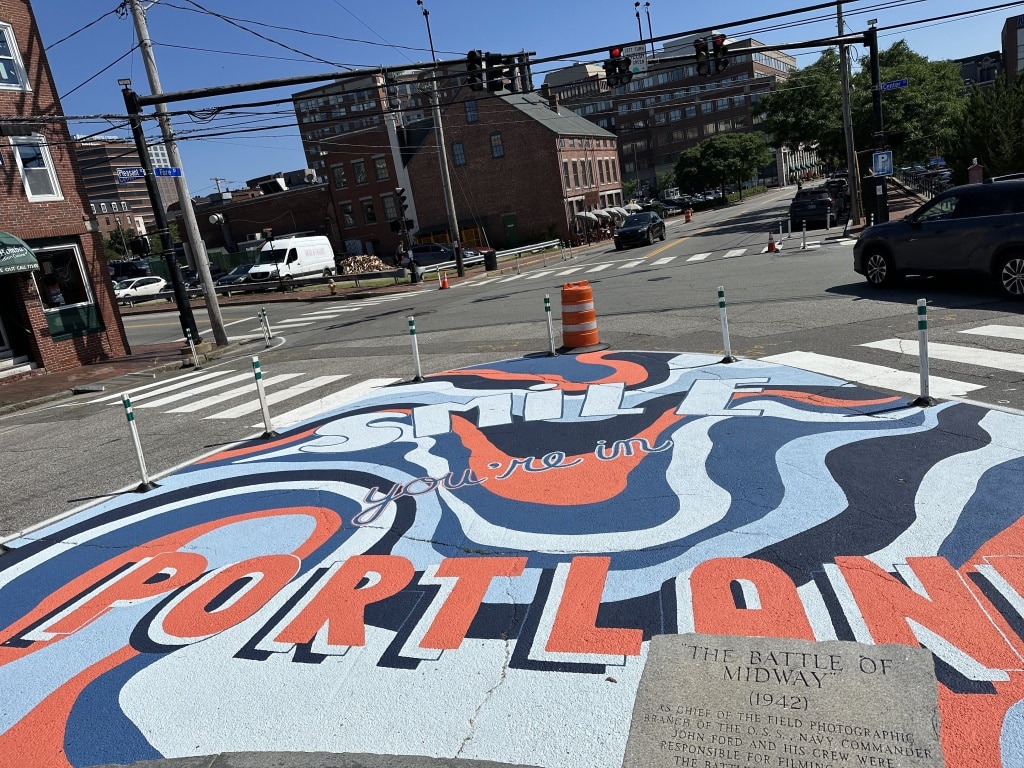
Lewiston (2022)
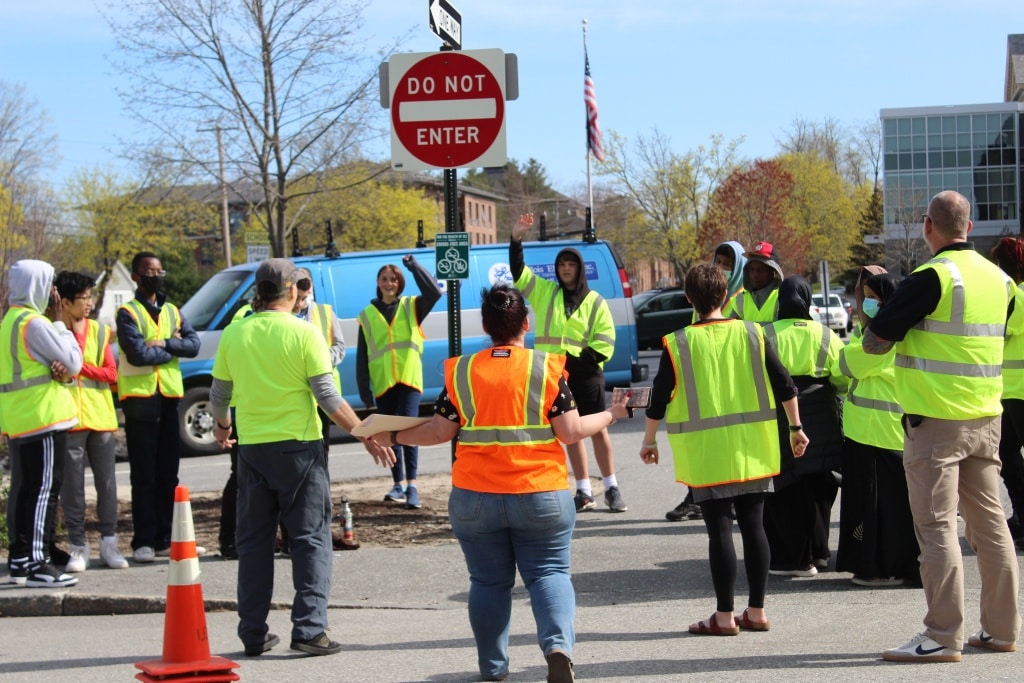
Augusta (2021)
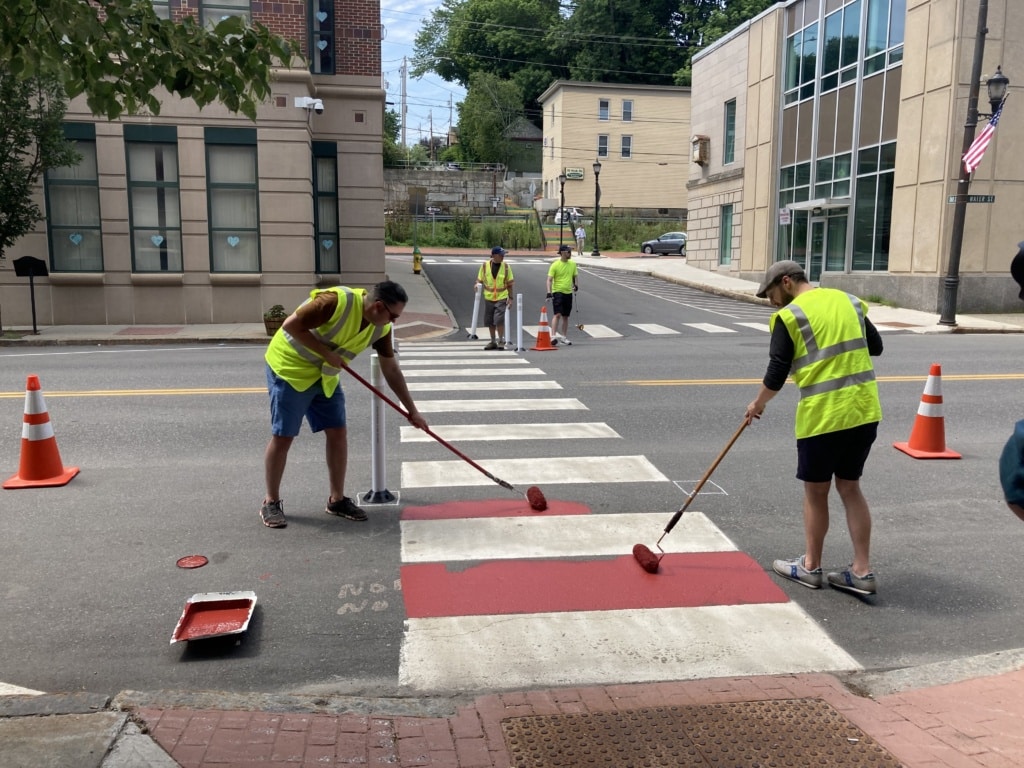
- Four crosswalks enhanced with delineators and red paint
- Preliminary studies indicate drivers yield more often when pedestrians show intent to cross closer to the travel lane
Bangor (2020)
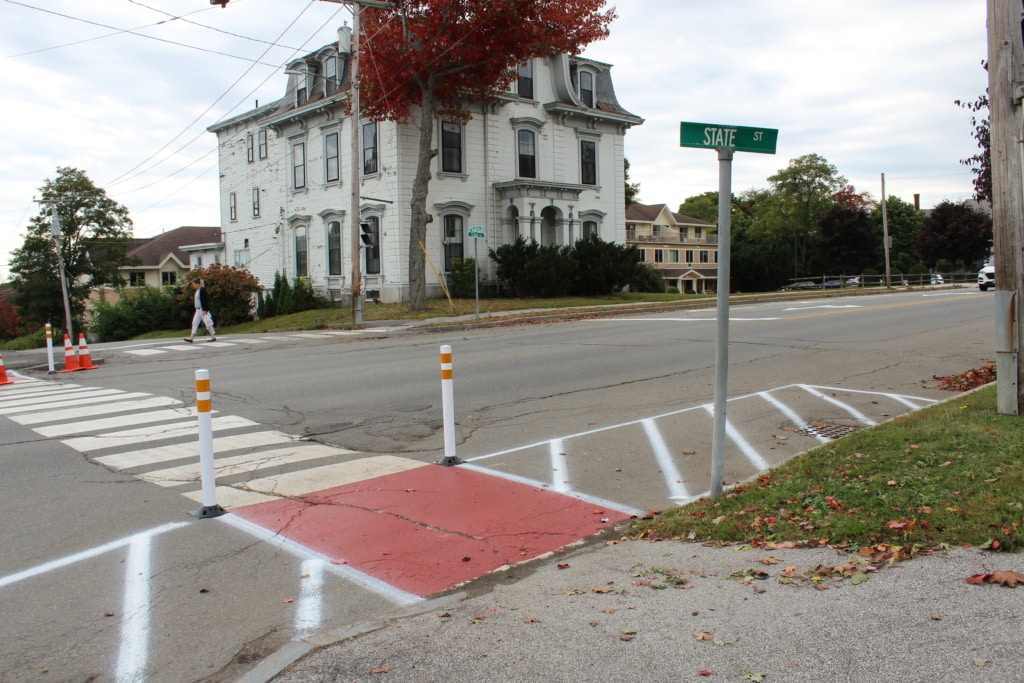
- 3 crosswalk enhancements
- Reduced average traveling speeds by 11%
- Reduced 85th percentile speeds by 9%
Millinocket (2021)
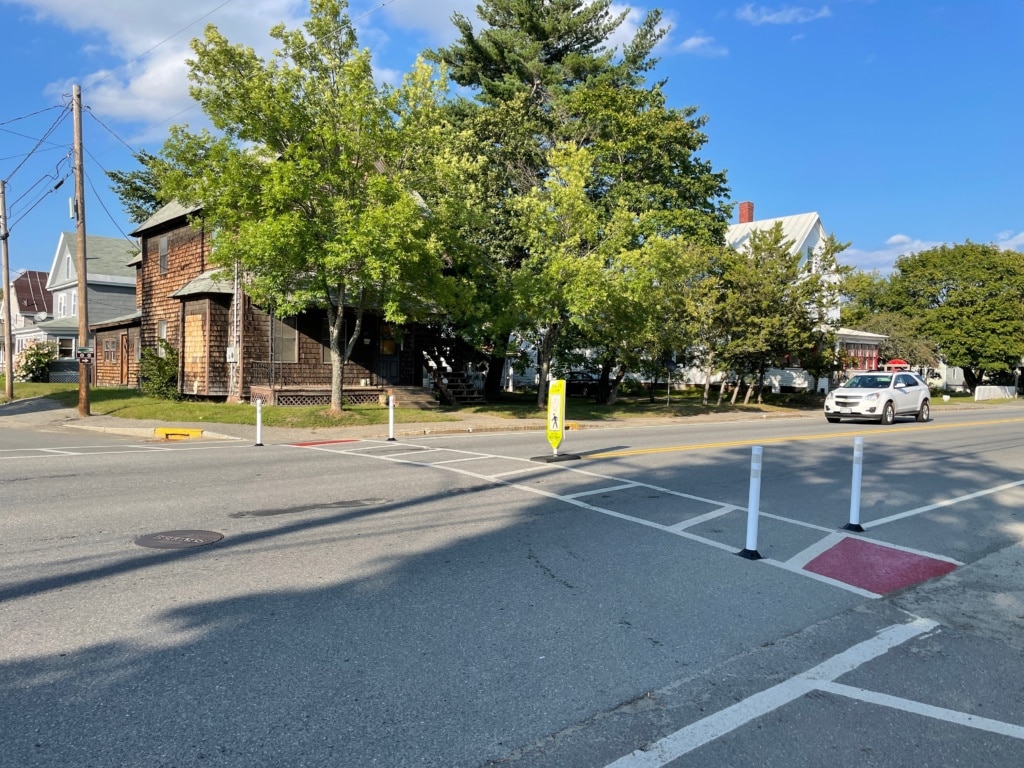
- Six crosswalks enhanced using delineators, red paint, and signage
- Roadway visually narrowed to calm traffic and call attention to speed limit change
- Additional delineators reduced turning radius of one intersection
North Yarmouth (2020)
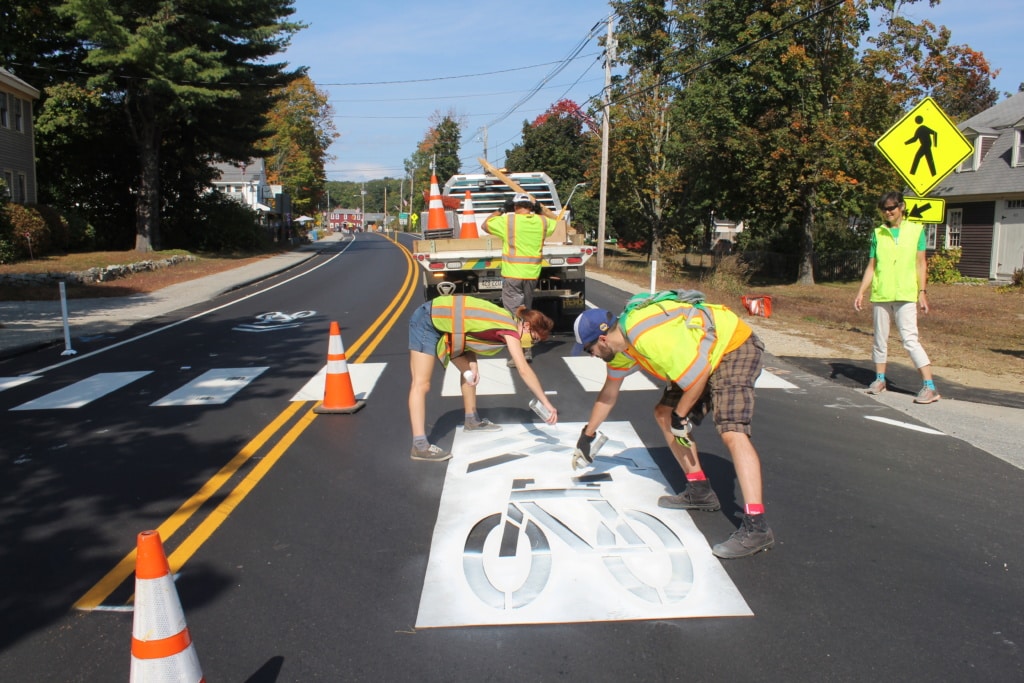
- 2 gateway treatments
- 3 crosswalk enhancements
- 2.25 miles of shared lane markings
- 2 streets with advisory lane markings
- Reduced average traveling speeds by 12%
- Reduced 85th percentile speeds by 13%
Portland (2021)
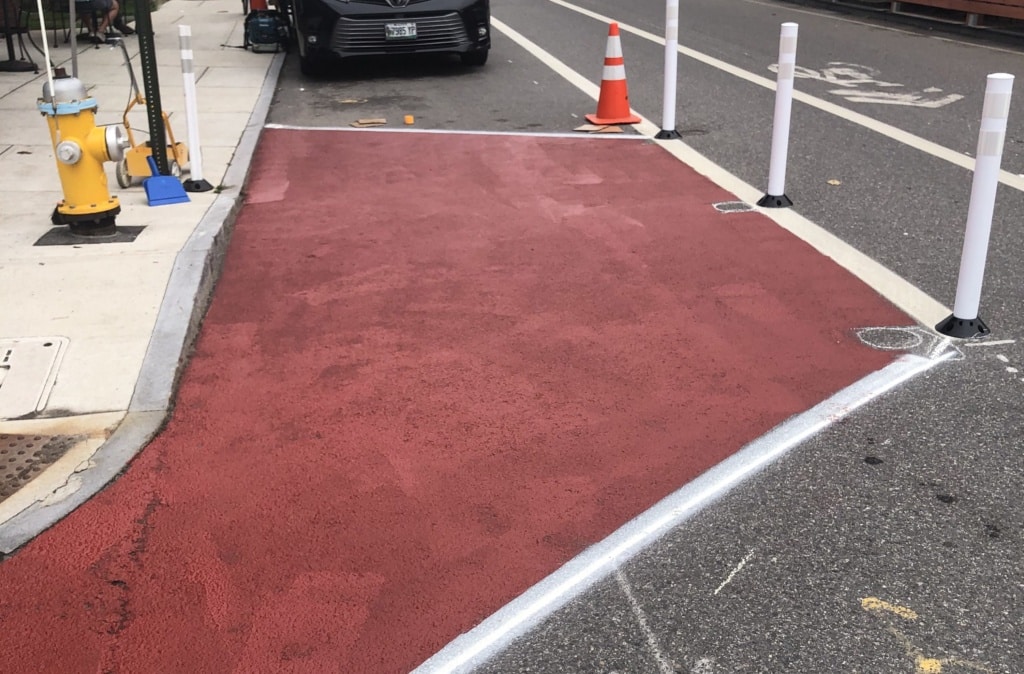
- Curb extension added to create safe landing for pedestrians
- Visibility of pedestrian island enhanced, additional space reclaimed
- Overwhelmingly positive feedback from residents who report feeling safer
Westbrook (2020)
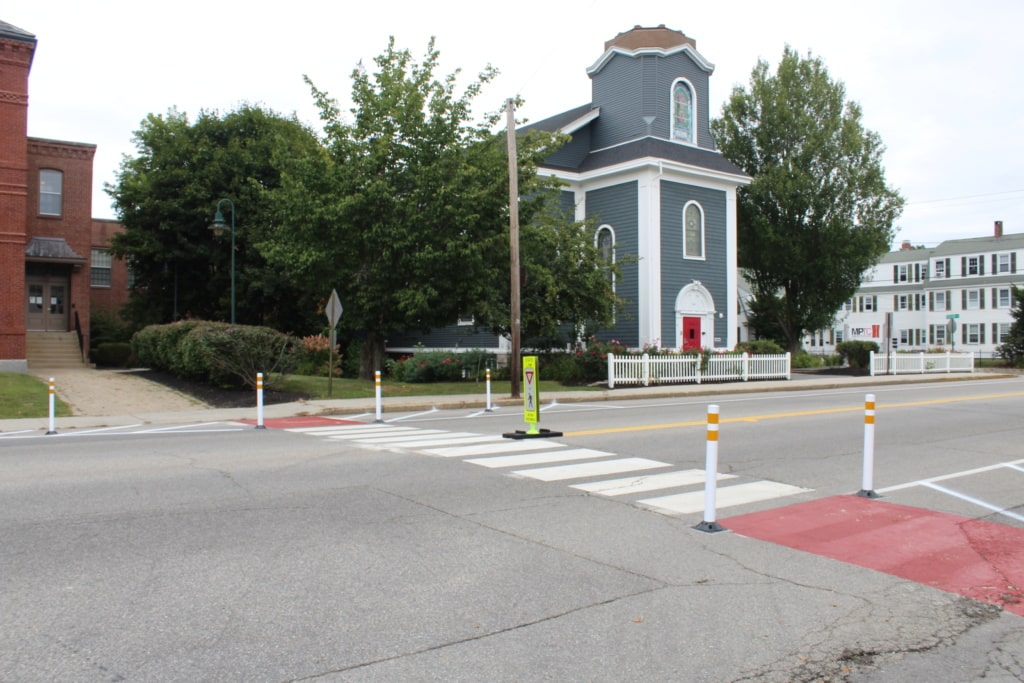
- 5 crosswalk enhancements
- Reduced average traveling speeds by 4%
- Reduced 85th percentile speeds by 3%
Learn more about the BCM’s Imagine People Here program.
Read the full 2020 Report on Imagine People Here Demonstration Projects.
*The 85th percentile speed is the speed at or below which 85 percent of the drivers will operate with open roads and favorable conditions.
* Gateway treatments alert drivers that they are entering a slower area. This treatment may include signage, entry portals, speed tables, raised crossings, and curb extensions.
*Advisory lanes create usable shoulders for bicyclists and pedestrians on a roadway that is otherwise too narrow to accommodate one. The shoulder narrows the road for vehicular traffic and motorists may only enter the shoulder when no bicyclists or pedestrians are present. This installation is recommended for roadways with low traffic volume.